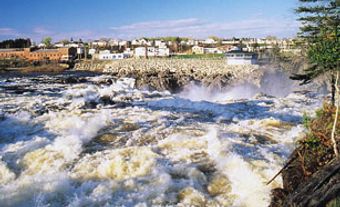Rothesay, NB, incorporated as a town in 1998, population 11 947 (2011c), 11 637 (2006c). The Town of Rothesay is the amalgamation of the town of Rothesay (incorporated 1956), the villages of East Riverside-Kinghurst, Fairvale and Renforth (all incorporated in 1966), and the unincorporated area of Wells. It is situated on the eastern side of the Kennebecasis River, 22 km northeast of Saint John.
Loyalists received grants as early as 1790 but permanent settlement did not occur until the 1840s. In the early 1850s the European and North American Railway opened it up as a residential area for the city of Saint John. First known as Kennebeccasis Bay, it was renamed by the railway in honour of the Prince of Wales, Duke of Rothesay, after his visit to New Brunswick in 1860. He had embarked for Fredericton by river steamboat from the community. In the 19th century shipbuilding flourished; the Kennebecasis is 80 m deep here. The river currently serves as a waterway for pleasure craft.
Rothesay remains a well-to-do residential community for Saint John; the local employers are primarily service industries. The average annual income is around 50% higher than the provincial average. The Rothesay Netherwood School was established in 1877 to prepare boys for entrance to the Royal Military College of Canada. From 1880 to 1894 it was co-educational until a girl's school was established. The 2 schools were united in 1984 and it remains the only private boarding school in New Brunswick.
The Canadian Open was held here in 1939, as were subsequent national championships. The town has also hosted the National Mixed and National Seniors curling championships. Resident Wallace R. Turnbull, the inventor of the variable pitch propeller, built an early wind tunnel here to test his inventions.

 Share on Facebook
Share on Facebook Share on X
Share on X Share by Email
Share by Email Share on Google Classroom
Share on Google Classroom

